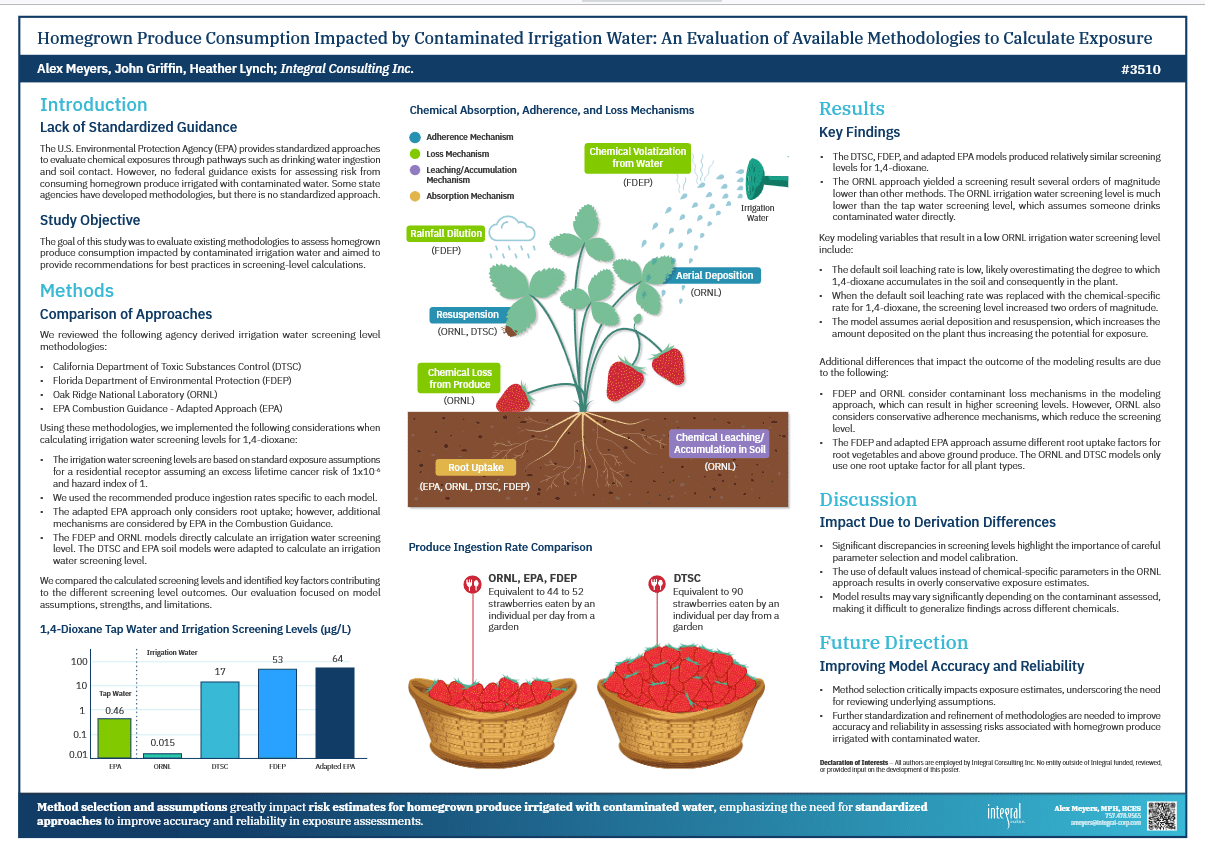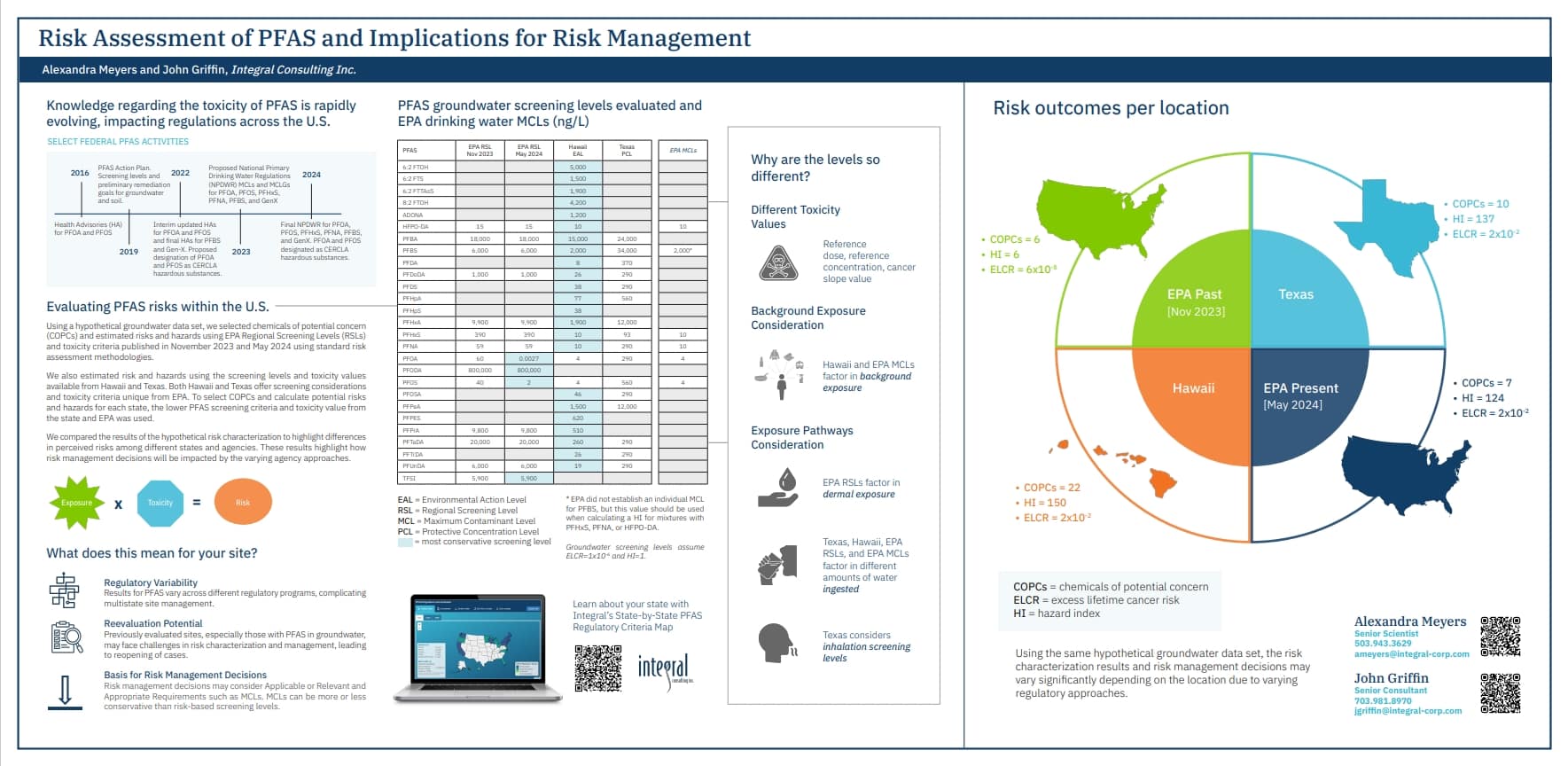
Mr. John Griffin has more than 20 years of experience in the areas of exposure assessment, risk assessment, risk communication, air emissions modeling, fate and transport modeling, database development, litigation support, and geographic information systems (GIS). He is a highly detail-oriented scientist who has led and participated in interdisciplinary teams to solve complex problems for his clients using the best science available. Currently, he performs risk assessments associated with consumer, occupational, and environmental exposure to a variety of chemicals including asbestos, per- and polyfluoroalkyl substances (PFAS), petroleum compounds, dioxins, PCBs, PAHs, and chlorinated solvents. He uses GIS-based site risk assessments to guide remedy and cleanup decisions and has conducted GIS-based region-wide population risk assessments to evaluate the long-range transport of chemicals in the environment. He has particular expertise in creating, managing, and analyzing large environmental sampling data sets. In addition, Mr. Griffin has developed and conducted exposure and risk assessments for various air emissions sources such as diesel engines, ceramic product kilns, coal-fired power plants, and coke oven batteries. He has evaluated exposure and risks from vapor intrusion at residential, commercial, and industrial properties.
M.S., Sustainable Development and Conservation Biology, University of Maryland, College Park, Maryland, 2000
B.S., Biology, University of Notre Dame, Notre Dame, Indiana, 1997
Member of International Society of Exposure Science
John R. Griffin Senior Consultant
Mr. John Griffin has more than 20 years of experience in the areas of exposure assessment, risk assessment, risk communication, air emissions modeling, fate and transport modeling, database development, litigation support, and geographic information systems (GIS). He is a highly detail-oriented scientist who has led and participated in interdisciplinary teams to solve complex problems for his clients using the best science available. Currently, he performs risk assessments associated with consumer, occupational, and environmental exposure to a variety of chemicals including asbestos, per- and polyfluoroalkyl substances (PFAS), petroleum compounds, dioxins, PCBs, PAHs, and chlorinated solv...
Mr. John Griffin has more than 20 years of experience in the areas of exposure assessment, risk assessment, risk communication, air emissions modeling, fate and transport modeling, database development, litigation support, and geographic information systems (GIS). He is a highly detail-oriented scientist who has led and participated in interdisciplinary teams to solve complex problems for his clients using the best science available. Currently, he performs risk assessments associated with consumer, occupational, and environmental exposure to a variety of chemicals including asbestos, per- and polyfluoroalkyl substances (PFAS), petroleum compounds, dioxins, PCBs, PAHs, and chlorinated solvents. He uses GIS-based site risk assessments to guide remedy and cleanup decisions and has conducted GIS-based region-wide population risk assessments to evaluate the long-range transport of chemicals in the environment. He has particular expertise in creating, managing, and analyzing large environmental sampling data sets. In addition, Mr. Griffin has developed and conducted exposure and risk assessments for various air emissions sources such as diesel engines, ceramic product kilns, coal-fired power plants, and coke oven batteries. He has evaluated exposure and risks from vapor intrusion at residential, commercial, and industrial properties.


Inorganic Arsenic Human Health Toxicity Update: Key Changes and Implications
Press Release
February 04 2025


